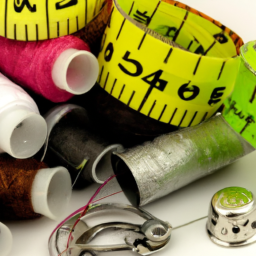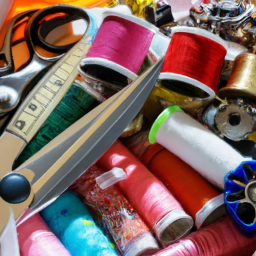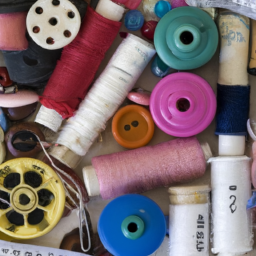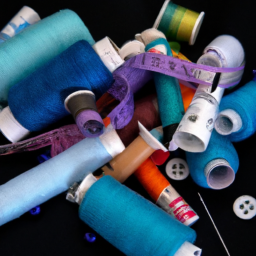

Sewing thread is an essential component in the textile industry, allowing fabrics to be joined together with strong and secure stitching. Have you ever wondered how this versatile thread is made? Let’s explore the fascinating process of sewing thread production.
Step 1: Fiber Selection
Various types of fibers can be used to create sewing thread, including cotton, polyester, nylon, and silk. The choice of fiber depends on the intended purpose and quality of the thread. Fibers are carefully chosen based on their strength, elasticity, and compatibility with different sewing techniques.
Step 2: Fiber Blending and Preparation
After selecting the appropriate fibers, they go through a blending process to achieve the desired characteristics of the thread. The fibers are mixed, carded, and combed to create an even blend. This process also helps in aligning the fibers, making them ready for spinning.
Step 3: Spinning
The blended fibers are then fed into a spinning machine. During spinning, the fibers are drawn out and twisted together to form a continuous thread. The spinning process ensures that the thread is strong and durable.
Step 4: Twisting
Depending on the desired thread thickness and strength, the spun thread is twisted further. This twisting process adds more stability to the thread and enhances its sewing performance.
Step 5: Winding
After twisting, the thread is wound onto precise spools or cones, ready for packaging and distribution. During this winding process, the thread is carefully monitored for any imperfections or defects.

Fun Fact: Industrial sewing thread production often involves using automated machines, like the one shown above, to achieve high-speed and efficient production.
Step 6: Quality Control
Before being released for sale, sewing threads undergo meticulous quality control checks. This ensures that each spool or cone meets specific standards and will perform reliably during sewing projects. Quality control tests include measuring thread strength, conducting colorfastness assessments, and checking for any surface defects.
Step 7: Packaging and Distribution
Once all quality control procedures are complete, the sewing thread is packaged into various sizes and formats suitable for consumers. These packaged threads are then distributed to fabric stores, garment manufacturers, and sewing enthusiasts worldwide.
Next time you pick up a spool of sewing thread, take a moment to appreciate the intricate process behind its creation. From fiber selection to quality control, each step ensures that the thread you use is of the highest quality, making your sewing projects a success!
Now, go thread those needles and stitch away!




